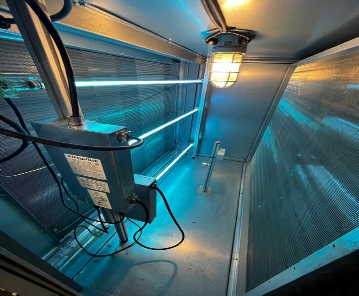





Biological fouling of evaporator fin and tube heat exchangers is a key contributor to decreased HVAC capacity. The biological fouling acts as an insulator, increasing air flow resistance and decreasing heat transfer. The fans run longer to maintain the building at the desired temperature, increasing kW draw with reduced cooling tonnage capacity. A mere 10% increase in fan motor run can significantly increase energy use. The chillers and pumps work harder to raise the leaving water temperature and achieve set temperature points. For each degree the water temperature is increased, a savings of 1-2% will be realized.
Steril-Aire high output UVC provides continuous cleaning of coils, eliminating the biofilm that causes reductions in operational efficiency. Studies have shown that removal of a .024” layer of biofilm can reduce HVAC energy usage by 21% by restoring heat transfer and system efficiency. Reduced cooling coil pressure drop helps save fan energy, while improved cooling coil heat transfer efficiency. Higher chilled water temperature setpoints allows the chiller plant to operate more efficiently.
How does HVAC biofilm impact HVAC energy costs?
ULTRAVIOLET TECHNOLOGY CAN SAY YOU MONEY





